If this were a Facebook status update I might write, “I’m feeling…sunny and dry.” St. Louis has received 13.2 inches of rain this month and a walk in my backyard now has a sound track: Squish, squish, squish. The lower end of the yard has a bit of ponding. Leaves still cover most of the beds. And accompanying all this rain has been cooler than normal temperatures. On a sunny day, we won’t discuss the gray, drab skies that are predicted to be back tomorrow.

Even though I cannot get in the garden today, I am celebrating for a couple of reasons. First, and the most obvious, is that it is sunny and dry. Yes! This condition is not expected to last, as our forecast calls for rain for the next 10 days. Second (really first) is that I am off work today! Woo hoo! Third (but truly first) is I will spend the afternoon with my eldest daughter.
Before the day gets away from me, here’s an Arch City Gardener pictoral status update of my plants and beds at the end of March. Oh! And thanks for reading.

In the front yard spirea begins to leaf out.
 Penstemon’s lettucy looking red leaves. I love this plant, which has been happy in this spot for five years.
Penstemon’s lettucy looking red leaves. I love this plant, which has been happy in this spot for five years. Karl Foerster grass is coming up
Karl Foerster grass is coming up Just a couple of gumballs to deal with. This is Round 3 of the rake up.
Just a couple of gumballs to deal with. This is Round 3 of the rake up.
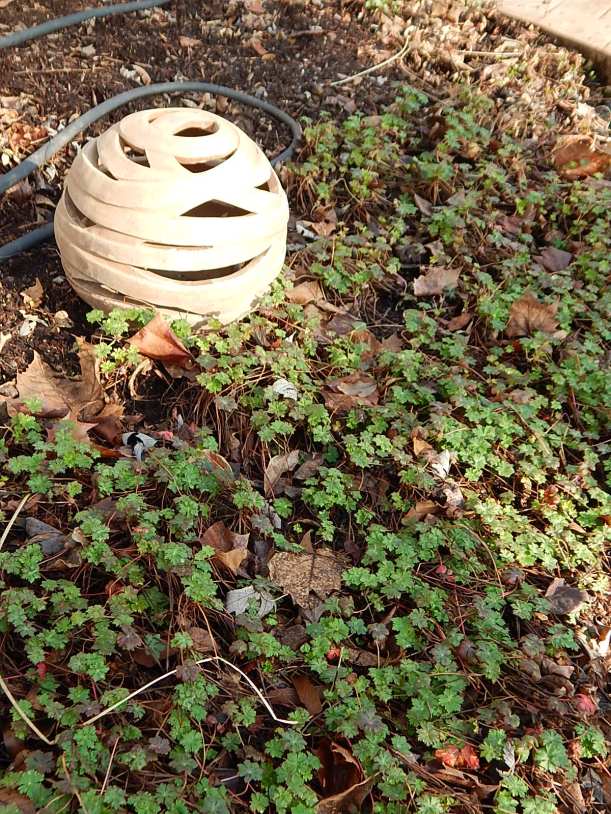 Cranesbill Biokova Karmina (geranium x cantabrigiense). What a wonderful groundcover. And talk about easy care!
Cranesbill Biokova Karmina (geranium x cantabrigiense). What a wonderful groundcover. And talk about easy care! The oakleaf hydrangea “Alice” looks deceptively docile. My pet name for her is “Godzilla.” The blooms are incredible.
The oakleaf hydrangea “Alice” looks deceptively docile. My pet name for her is “Godzilla.” The blooms are incredible. Planted about six years ago, this low-growing juniper (Juniper horizontalis) is a slow creeper and provides lovely texture with a green-yellow tint. Behind her are stella d’oro day lilies.
Planted about six years ago, this low-growing juniper (Juniper horizontalis) is a slow creeper and provides lovely texture with a green-yellow tint. Behind her are stella d’oro day lilies.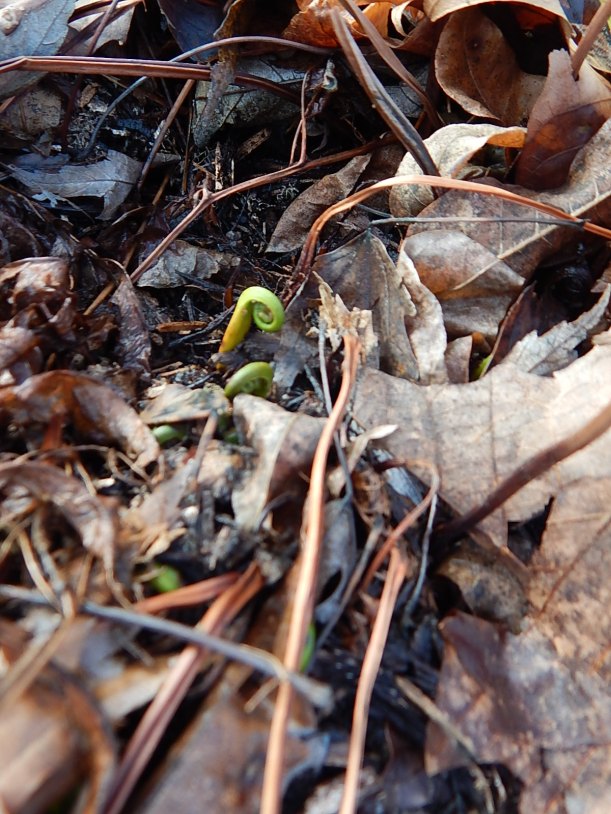 The fiddleheads of Ostrich Fern (Matteuccia struthiopteris) begin their graceful unfurling. Ferns are my favorite plants to observe.
The fiddleheads of Ostrich Fern (Matteuccia struthiopteris) begin their graceful unfurling. Ferns are my favorite plants to observe.
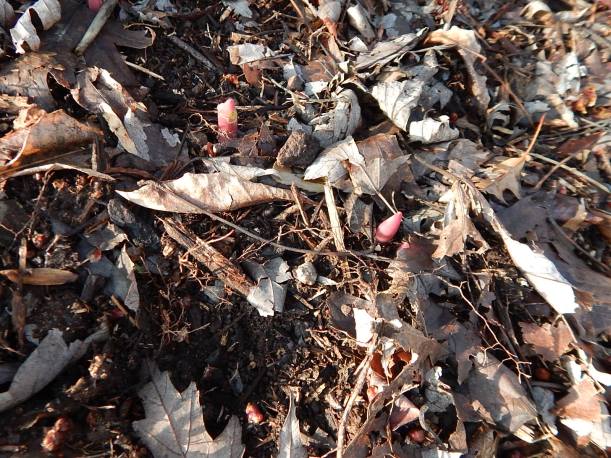 Peonies–Eden’s Perfume, Shirley Temple, and Sarah Bernhardt–peek through the leaves. The peonies were a new additions last year to the bed below the paperbark maple.
Peonies–Eden’s Perfume, Shirley Temple, and Sarah Bernhardt–peek through the leaves. The peonies were a new additions last year to the bed below the paperbark maple.
 Creeping jenny groundcover is vigorous and advancing. It had better dry up so I can get out there and rake.
Creeping jenny groundcover is vigorous and advancing. It had better dry up so I can get out there and rake.

 Saving time, energy and resources are important to me, as I have a finite amount of each. And I like to try clever tips in the garden to help me achieve this. But I’m not sure any of these tips are actually worthwhile. For example, I bundle up my acid-loving azaleas in the winter with trimmings from the Christmas tree. I like to think this lovely stole of greenery protects them when winter temps drop and that maybe they even benefit from the acid in the boughs. Clever or clueless? I’ve done this for a few years now and I have really have no idea if this is a waste of time. My soil is relatively acidic and I feed the the azalea each year, so I’m thinking that perhaps I could be clueless. On the other hand, they are not protected from wind and leaves I rake beneath them in the fall blow away, so the boughs could be a clever idea.
Saving time, energy and resources are important to me, as I have a finite amount of each. And I like to try clever tips in the garden to help me achieve this. But I’m not sure any of these tips are actually worthwhile. For example, I bundle up my acid-loving azaleas in the winter with trimmings from the Christmas tree. I like to think this lovely stole of greenery protects them when winter temps drop and that maybe they even benefit from the acid in the boughs. Clever or clueless? I’ve done this for a few years now and I have really have no idea if this is a waste of time. My soil is relatively acidic and I feed the the azalea each year, so I’m thinking that perhaps I could be clueless. On the other hand, they are not protected from wind and leaves I rake beneath them in the fall blow away, so the boughs could be a clever idea.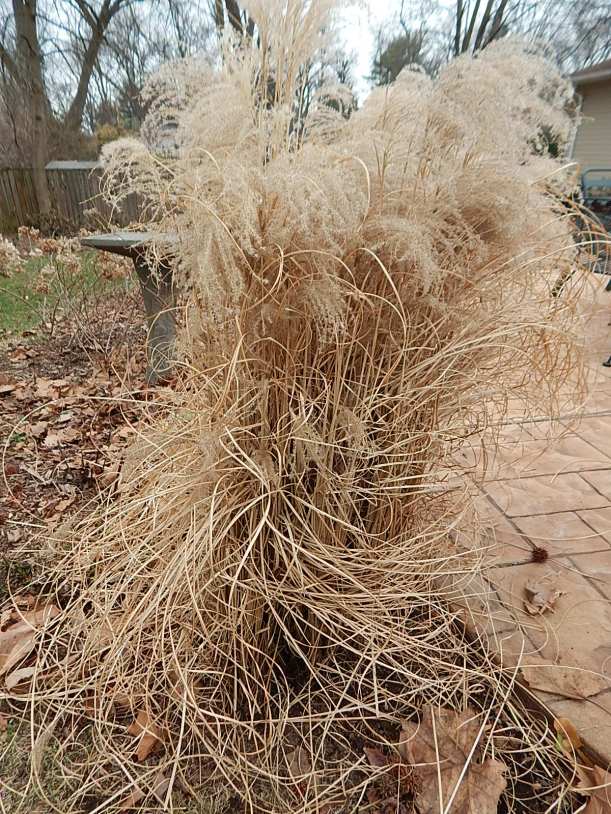 To help save time when cutting back grasses such as my variegated maiden grass (miscanthus sinensis variegatus) I tie them to keep them upright while I saw them back chunk by chunk. That way they aren’t flopping all over the place while I’m cutting them. Clever or clueless? I think I’ll score this one as clever.
To help save time when cutting back grasses such as my variegated maiden grass (miscanthus sinensis variegatus) I tie them to keep them upright while I saw them back chunk by chunk. That way they aren’t flopping all over the place while I’m cutting them. Clever or clueless? I think I’ll score this one as clever.  I use diluted solution of bleach water to wipe my clipper blades when pruning rose bushes. I wipe the blades clean between each rose bush so that I don’t transfer any pathogen to another shrub. In fact, I generally clean my tools after I use them. Clever or clueless? I think clever.
I use diluted solution of bleach water to wipe my clipper blades when pruning rose bushes. I wipe the blades clean between each rose bush so that I don’t transfer any pathogen to another shrub. In fact, I generally clean my tools after I use them. Clever or clueless? I think clever.



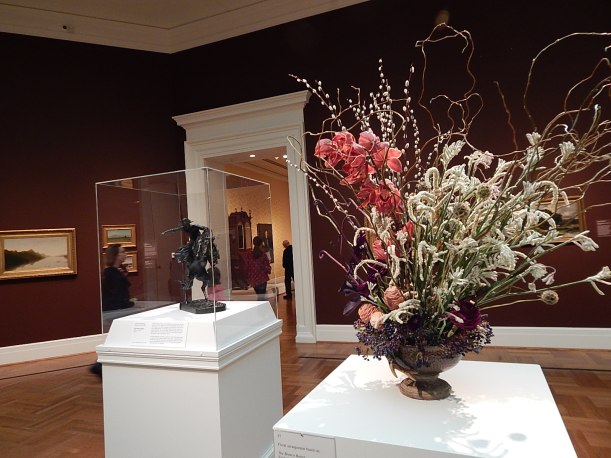
 There’s nothing like a tropical vacation. Needing a little heat and humidity, I dashed off to west St. Louis County on Saturday–two grandchildren in tow–to take in the fluttering wonder of the Blue Morpho butterfly in the tropical environs of the
There’s nothing like a tropical vacation. Needing a little heat and humidity, I dashed off to west St. Louis County on Saturday–two grandchildren in tow–to take in the fluttering wonder of the Blue Morpho butterfly in the tropical environs of the 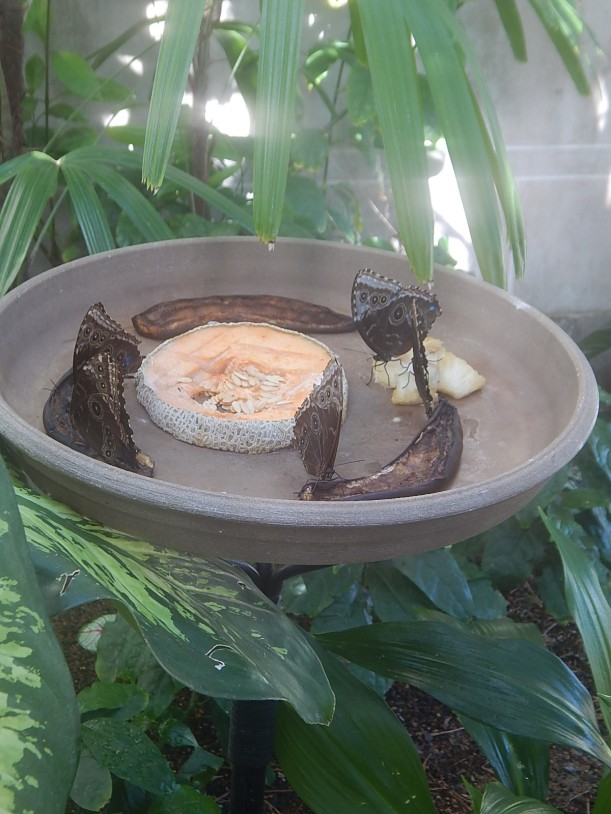 The morpho is a brilliant blue butterfly who lives in the tropical rainforests of Latin America. And the Butterfly House is involved in conservation efforts of this butterfly with Costa Rica. Before entering the conservatory, the docent told us the butterflies were particularly active because it was a bright sunny day. She wasn’t kidding. Nearly 1,500 blue morphos are taking flight throughout March and they were everywhere. They are fast fliers so it was hard to capture them flying.
The morpho is a brilliant blue butterfly who lives in the tropical rainforests of Latin America. And the Butterfly House is involved in conservation efforts of this butterfly with Costa Rica. Before entering the conservatory, the docent told us the butterflies were particularly active because it was a bright sunny day. She wasn’t kidding. Nearly 1,500 blue morphos are taking flight throughout March and they were everywhere. They are fast fliers so it was hard to capture them flying.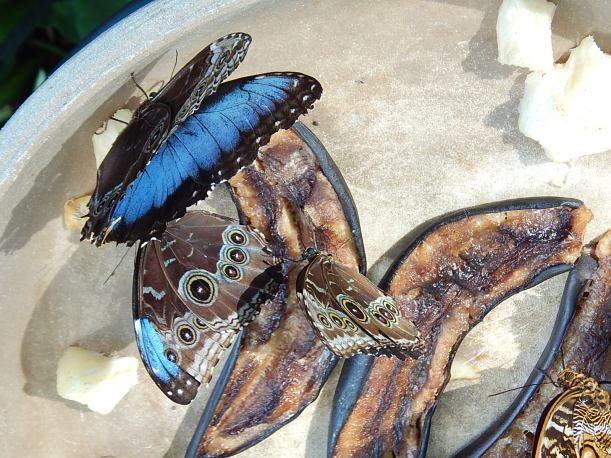



 When I bought the tree, the guy at the nursery told me they are slow growers and that it might take a few years for the tree to really exhibit the peeling bark feature.
When I bought the tree, the guy at the nursery told me they are slow growers and that it might take a few years for the tree to really exhibit the peeling bark feature.  This is a view of the bark facing west with the sun at its back As you can see there is lots of peeling going on. What a cool tree.
This is a view of the bark facing west with the sun at its back As you can see there is lots of peeling going on. What a cool tree.